All About Mangrove Snapper – Florida Keys Gray Snapper Facts
Mangrove Snapper, also known as Gray Snapper and scientifically as Lutjanus griseus, is a fish anglers in the Florida Keys encounter frequently. Mangrove snapper seems to live everywhere around here, from the canals to flats, the reef, and even sometimes in open water. We have decades of experience catching Mangrove Snapper as a daily fishing charter business.
We know where to find them and how to catch them, filet them, and, of course, eat them! But there are many fascinating things to learn about a fish that you might not glean, even when handling them for so many decades.
Our All about series aims to bring to light facts that are less well known especially for fish that we catch commonly. But first let’s cover the basics!
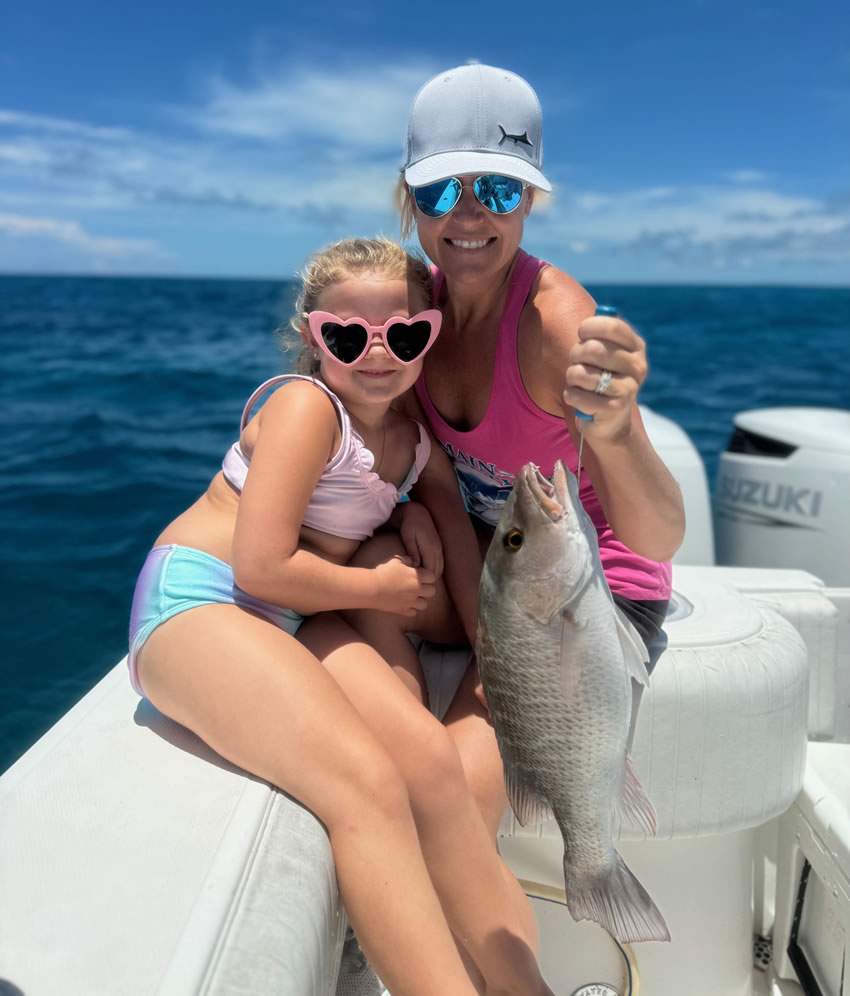
The Basics
The Mangrove snapper can be found all throughout the Atlantic Ocean from Massachusetts to South America. They are caught commercially, recreationally, and for use in aquariums.
They range in color from grey to copper, or a brownish red. They can change their color quickly to help them camouflage with their surroundings. They have a dark strip along their eyes. We have caught them as large as 24-26 inches, but usually, we see them in the 10-18 inch range.
Mangrove snappers have sharp teeth, including a nice set of fangs! Keep your finger away from their mouths when you try to get back your hook, or they will bite you!
It is common to confuse a young Cubera Snapper with a Mangrove Snapper. The best way to tell the difference is that the roof of the mouth on a Mangrove Snapper has the distinct shape of an arrow, whereas, on a Cuber snapper, the toot patch on the roof of its mouth is triangle-shaped.
Now that the basics are out of the way let’s learn some interesting lesser-known facts about Mangrove Snapper!
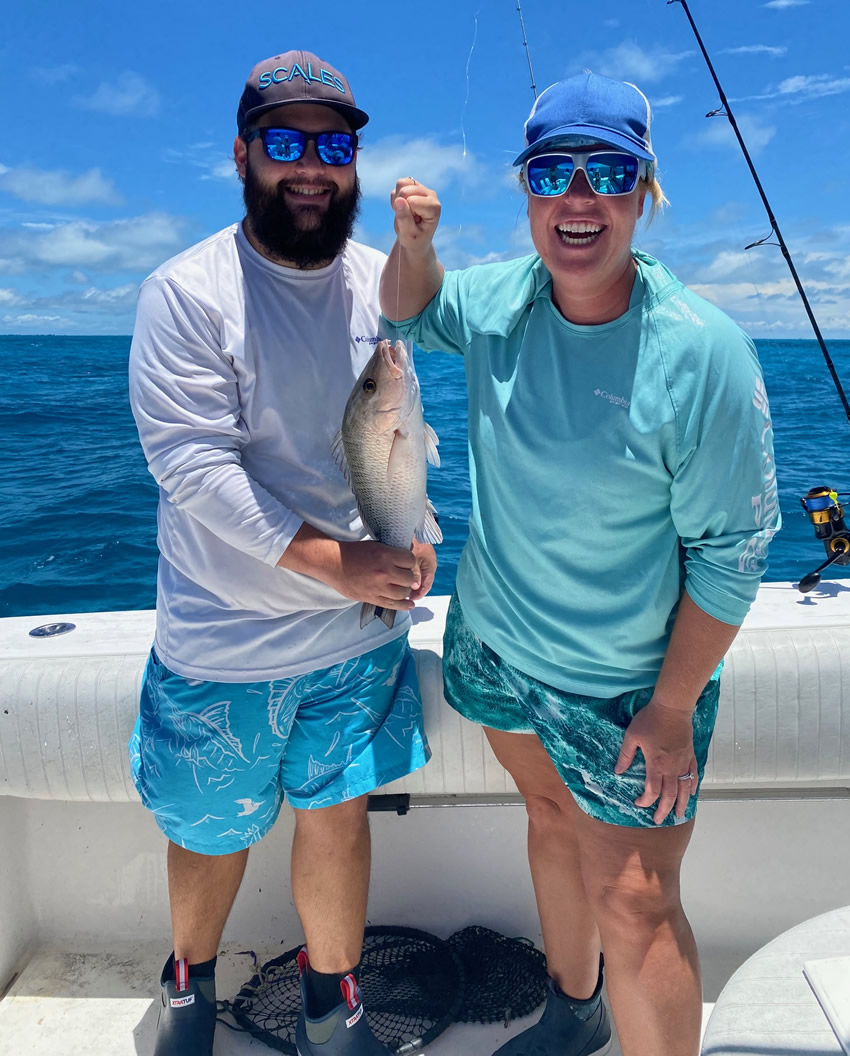
Night Vision
Mangrove Snappers see great in low light conditions thanks to a reflective layer in the back of their retina called the tapetum lucidum. Being able to see in the dark helps them feed on shrimp and crabs during the night, using their sharp canine teeth.
Vocal Fish
Mangrove Snappers can produce grunting and clicking sounds for communication during mating or territorial spats. This includes younger fish and, shockingly, even larvae! Scientists aren’t sure how they create these sounds, but they have found during research in the past 10 years that larvae can make knock and growl sounds like grown fish. They also found that Mangrove snappers are much more vocal at night.
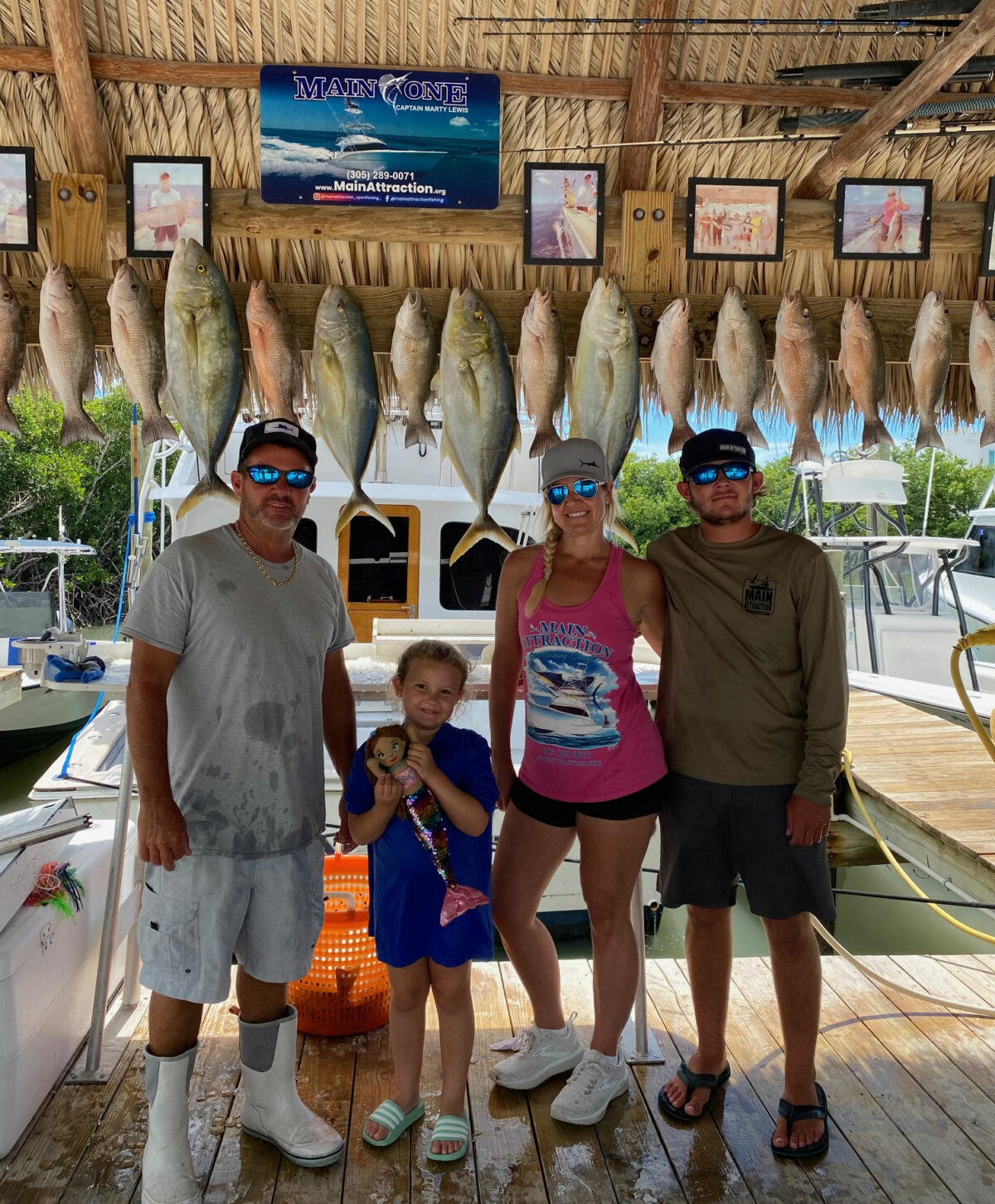
Reproductive Masters
The species undisputedly is great at spawning as there is no shortage of this species in Florida waters year-round. This is likely because Mangrove Snappers are capable of spawning multiple times in a single spawning season. Here in the Keys, from June through August, peaking around the full moons. Several scientific papers and articles claim Mangrove Snappers are protogynous hermaphrodites, which suggests they are all born as females and then some later transition to males as needed. (M.D. Murphy and R.S. Carr).
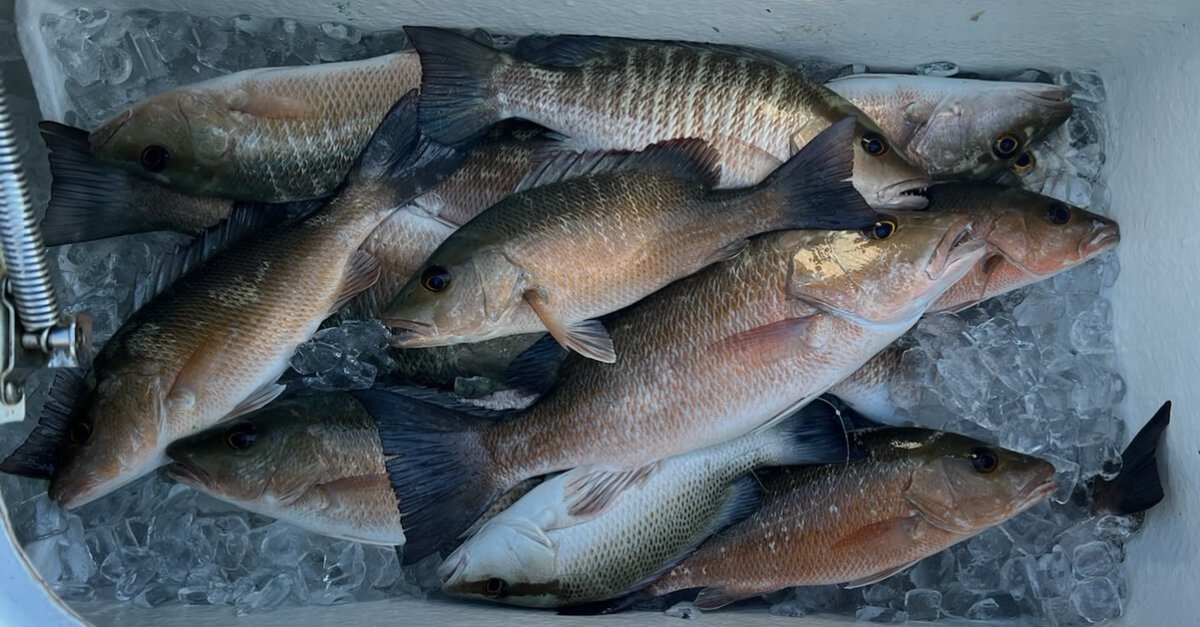
Scales Tell A Story
The growth rings on a Mangrove Snapper’s scales can reveal its age and past living conditions, kind of like a tree! Scientists use this information to study a variety of fish species populations and ocean health. This is not specific only to Mangrove Snapper, but it includes them, which is quite interesting!
How To Catch Them
We catch our Mangrove Snapper on the reef, especially in July when they are spawning. The Mangrove Snapper are especially large, and have voracious appetites during this time. We start chumming as soon as we are on anchor and it isn’t usually much longer than a few minutes before we put baits on the end of our knocker rigs to drop to the bottom.
A knocker rig consists of a free sliding barrel sinker on the line with a hook. A long fluorocarbon leader is recommended in case the water is clear. Basically, it’s a Carolina rig without a swivel. The size of the lead we use is determined by how much current there is.
We typically use cut bait such as ballyhoo, pilchards, squid or frozen shrimp. When targeting larger Mangrove Snapper, we use live ballyhoo and pilchards.
It isn’t, but you should be getting a bite a few seconds before. You might get a couple of lightning-fast taps and then a tug. You want to be quickly winding on that tug; you should be hooked up! Jerking on the rod won’t work because the line will have slack; you need to wind to get tight on the fish. Mangrove Snappers are notoriously wary fish, so you may miss a few, but that’s ok. Rinse and repeat till you hit your limit!
Once hooked, they will run straight for the rocks to break you off so wind quickly. It is also VERY possible to hook a grouper while doing this, so wind quickly and fiercely because they are even better at chaffing your line off in the rocks than a Mangrove Snapper!
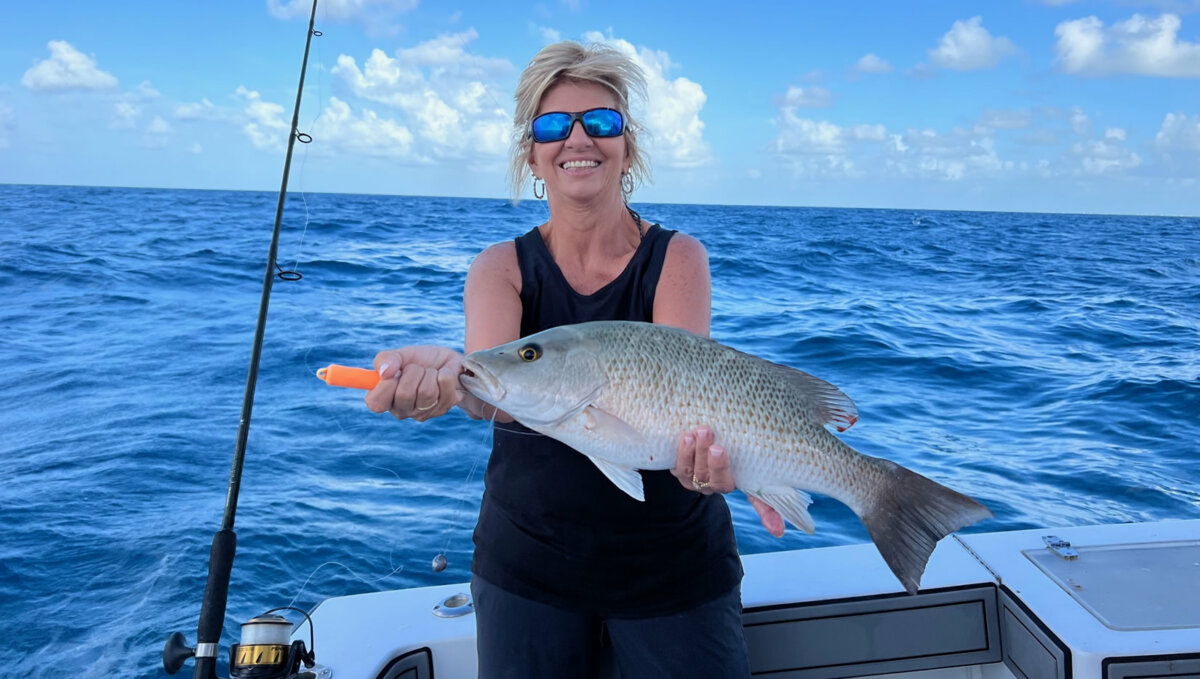
Spear Fishing
Mangrove Snapper are territorial, wary, and untrusting, so don’t expect them to swim up to you out of curiosity! You need to take them by surprise. Also, know the regulations before you hunt, and use your pole as a measuring tool by marking off a few reference points for quick size estimations.
Conclusion
The Mangrove Snapper may be a common fish, but its role in the Florida Keys ecosystem is anything but ordinary. As juveniles, Mangrove Snappers play a critical role in the health of mangrove ecosystems by feeding on small fish and invertebrates to help maintain balance.
A plentiful and delicious-tasting fish, the Mangrove Snapper species is a beloved and valuable resource of the Florida Keys. Preserving this remarkable species ensures that future generations can appreciate and benefit from its presence in the waters of the Florida Keys for years to come.
If you’re interested and having a good time on the water, catching some Snapper and more, give us a call at (305) 289-0071 or visit our contact page.




